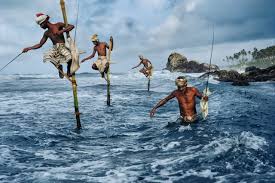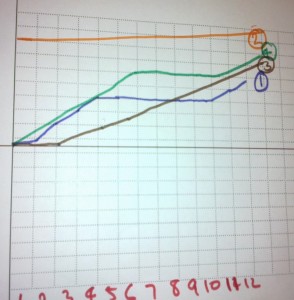The Prac – Outside on the street with DSLR
Though I’ve had some experience with photography, mainly with a compact when travelling and the ubiquitous iphone, I have never used a DSLR. So this week it has been a learning curve understanding the camera terminology such as F-stops (higher the number, the greater depth of field; the lower the number, the shallow depth of field), ISO and aperture speeds. The last two I’m more familiar with, especially using analog cameras where you simply focused on the speed of the film (usually 100 ISO).
Experimenting with the DSLR around the city was more pleasurable than I thought as I was able to get some shots that I thought were at least reasonable.
I like the first one here with its bold pink in contrast to the dark framing. Also, the chair in the foreground leads you in. I call it “Flamingo Noir”. Mmm. Have I invented a new genre?

I seem to have, rather accidentally, found a use of shadows formed off buildings. I was trying to develop a way of guiding the viewer into the image. For example, this one below. It’s a little over exposed but I feel like I’m walking into the frame.
FAVOURITE PHOTOGRAPHER
I chose Steve McCurry because like many people I was taken by the iconic and arresting portrait of the Afghani girl in a refugee during the Afghani War. There is something haunting and accusatory in
 the young girl’s eyes. I’d never seen anything quite like it.
the young girl’s eyes. I’d never seen anything quite like it.
It wasn’t after I was perusing in a bookshop that I saw some more of McCurry’s work and I ended up buying his Monsoon series which focused on Asia and Australia.
 But what I really loved about McCurry’s work was the way he was able to not only achieve these brilliant and vibrant colours
But what I really loved about McCurry’s work was the way he was able to not only achieve these brilliant and vibrant colours  but draw you in with the subject matter through framing the subject with something juxtaposed in the background.
but draw you in with the subject matter through framing the subject with something juxtaposed in the background.
Take for example the photo below. The train, a symbol of progress and modernity (by Indian standards – the shot was 1974), cuts through the frame with the ancient Taj Mahal in the background. The men seem quite at home on something that is not from their culture and perhaps McCurry is trying to say that India has always been a country happy with change while keeping its culture in tact.

In fact, McCurry’s photography inspired me to go to India, and I ended up going to Jodhpur, the ‘Blue City’ (below).

Alas, it wasn’t as blue as it is here in this photograph. Clearly, McCurry had used filters and has admitted to Photoshopping his images – a crime surely against photojournalist orthodoxy.
Thus, he’s had to redefine himself more as a storyteller rather than that of a photojournalist. In any case, I think he has made some fantastic choices and has a keen sense of what holds the gaze of the viewer and the subject’s story.









